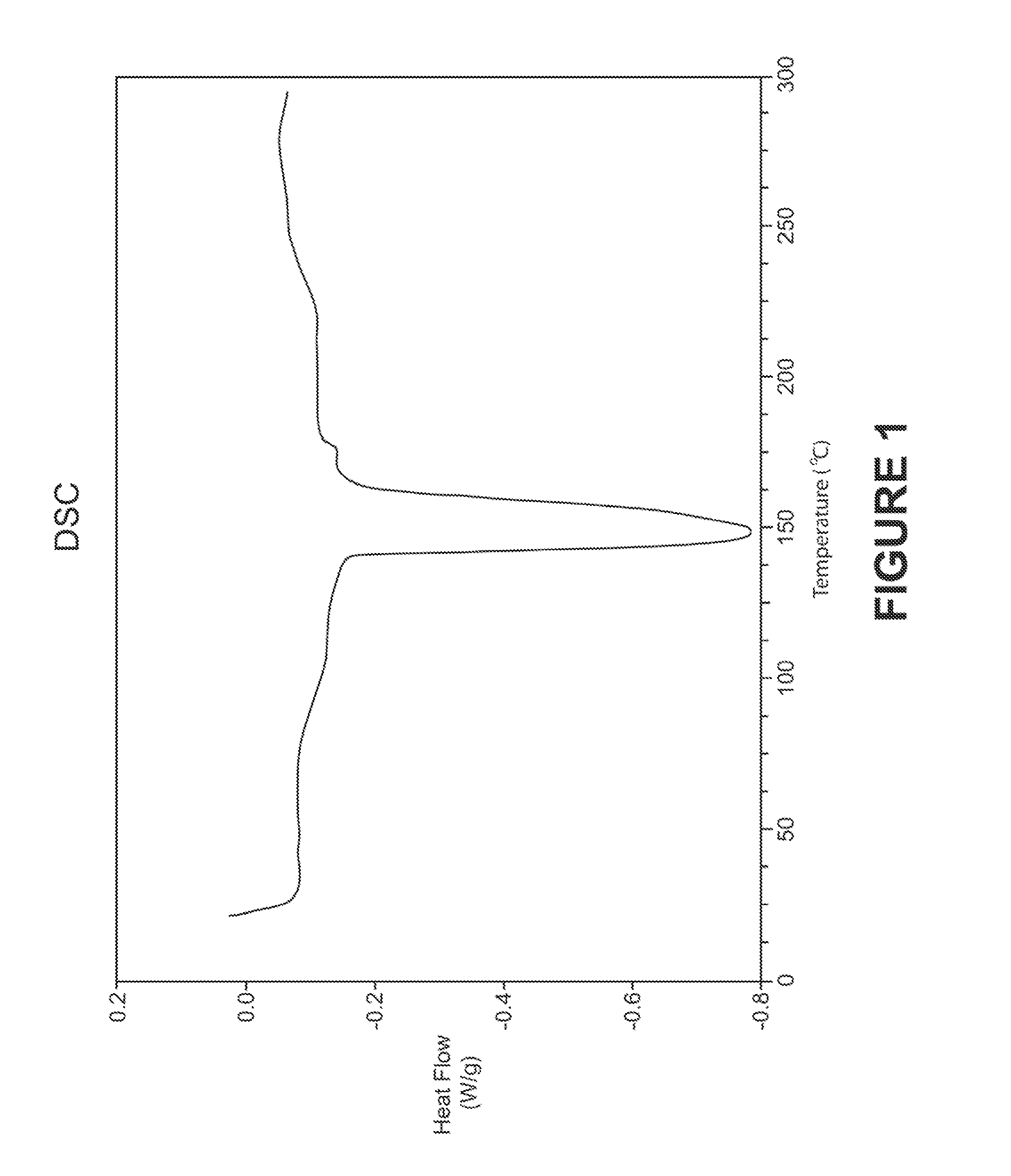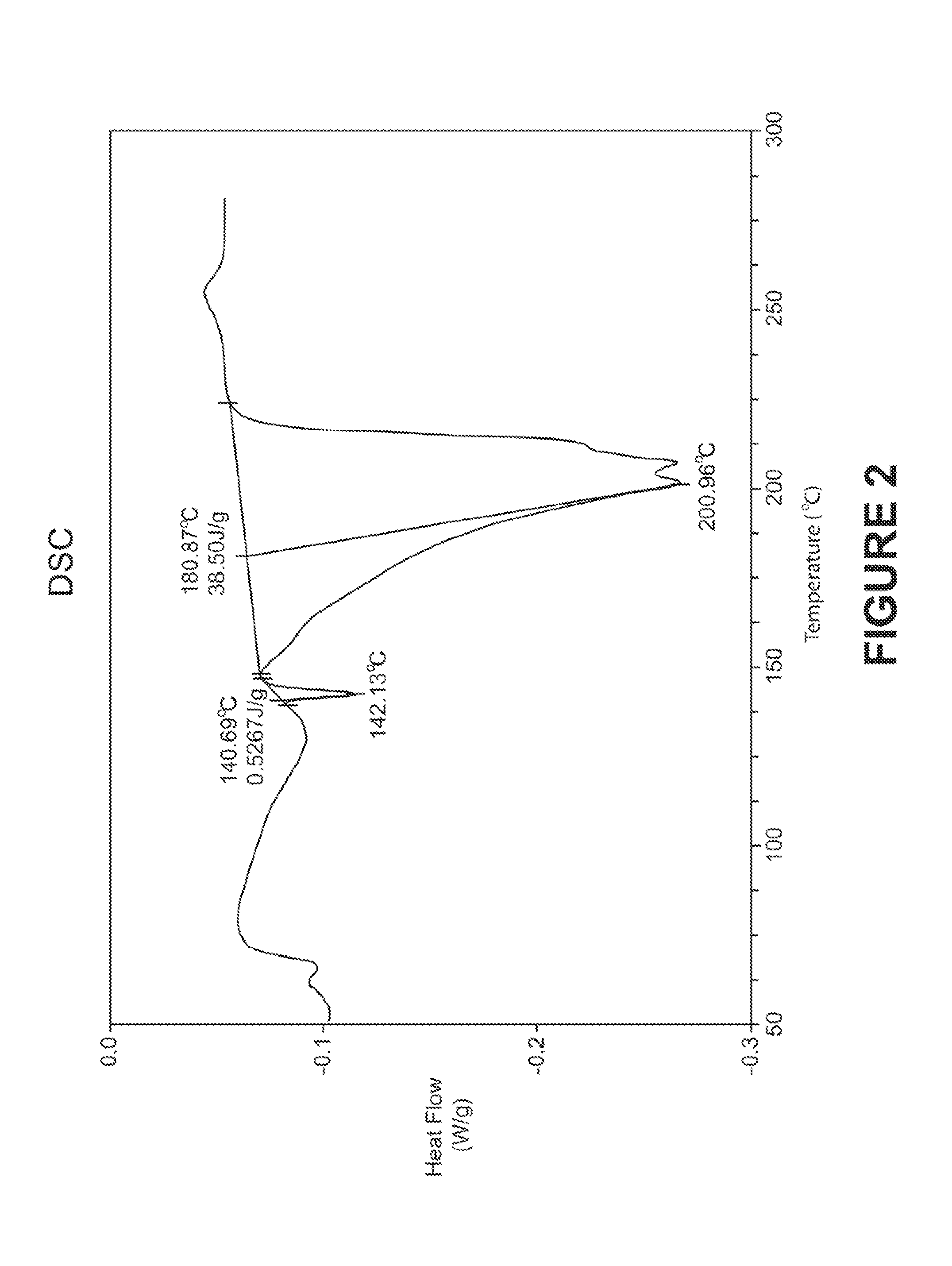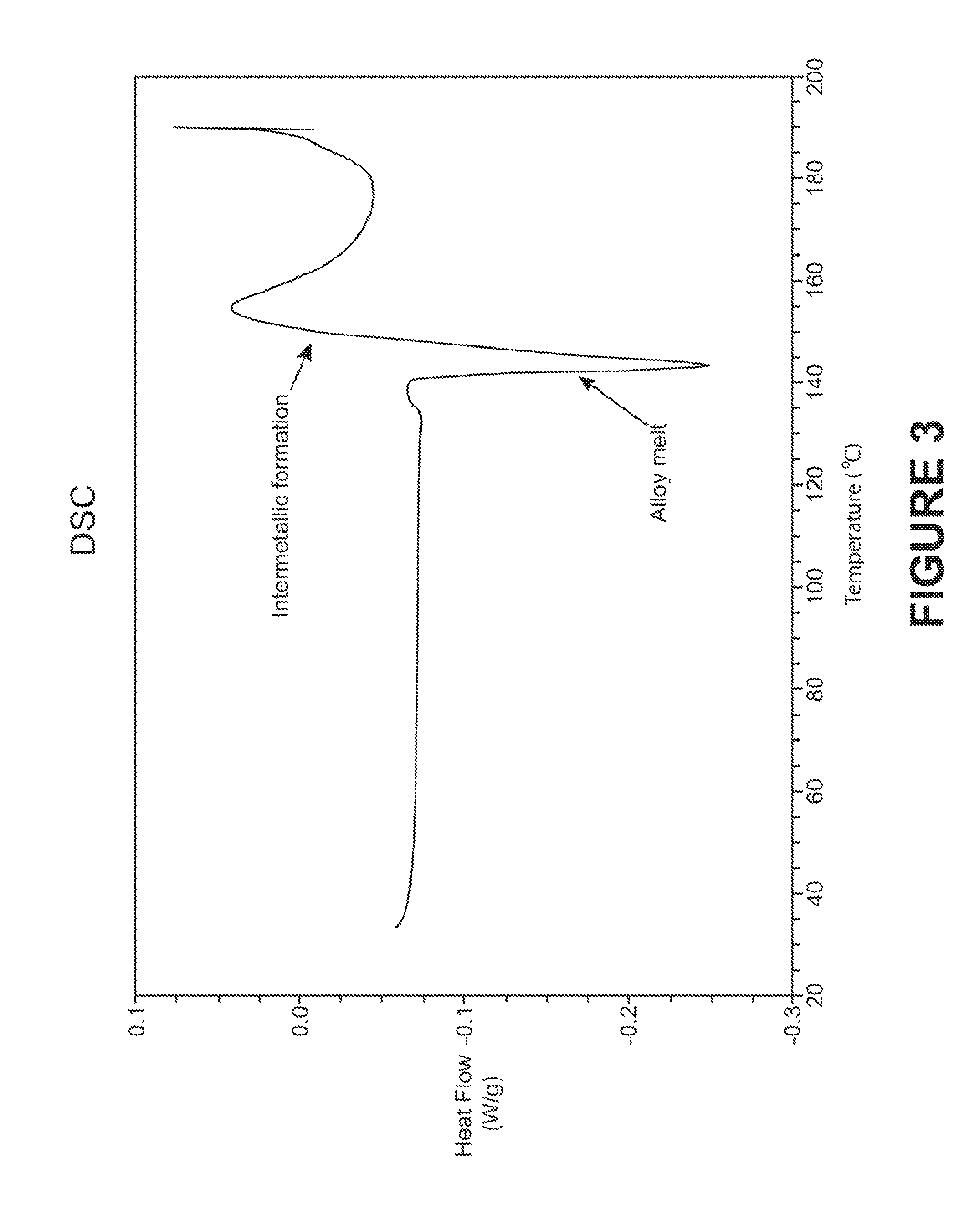Electrically conductive compositions comprising non-eutectic solder alloys
a technology of non-eutectic solder alloys and compositions, which is applied in the direction of welding/cutting media/materials, manufacturing tools, and so on, and can solve the problems of limiting the selection of lmp alloys, unable to reproduce the original melt signature of the mixture, and rendering harmless the effect of mixtures
- Summary
- Abstract
- Description
- Claims
- Application Information
AI Technical Summary
Benefits of technology
Problems solved by technology
Method used
Image
Examples
example 1
[0106]TLPS formulations were prepared for the purpose of attaching semiconductor die electrically, thermally and mechanically to lead frames. The composition of the alloy was varied to determine the effect on the mechanical strength of the joint. The specific proportions of constituents in the TLPS formulations were as indicated in the Table 3 below:
TABLE 3ControlDT0005-50DT0005-51DAP214 2-Component062712106271220606122#3Organic VehicleOleic acid / triethanolamine0.7320.7320.732salt (1:1 molar)Antifoam 140010.1460.1460.146Cationic Catalyst20.0730.0730.073Phenol / Alkanolamine2.1952.1952.195Salt Flux3Mixture of epoxy &0.7810.7810.781epoxy-acrylate resins4Epoxy-Acrylate Diluent52.1462.1462.146Diacrylate Resin62.9272.9272.927Metallic Components3 μm Mitsui copper1212128 micron copper, powder2424248 μm copper flake151515Sn42 / Bi58, 10 μm40Sn—Bi(60 / 40), 10 μm40Sn—Bi(80 / 20), 10 μm40Total1001001001Dow Corning ®;2PC-2506 (Diaryliodonium-SbF6, Solid Salt), Polyset Corp.3Ortho-Diallyl Bisphenol A:t...
example 2
[0109]Two TLPS pastes were formulated for use in microvia holes for the interconnection of layers of circuitry in a multilayer printed circuit board. In each paste, the HMP metal, Cu, was 40% by weight, the organic vehicle (described above in EXAMPLE 1) was 10% by weight and the alloy constituted the remaining 50%. In the first paste, the low melting temperature alloy used was a blend of two eutectic alloy powders: Sn58 / Bi42 and Sn96.5 / Ag3 / Cu0.5 in a proportion such that the total ratio of Sn to Bi was 4:1. In the second paste, the low melting temperature alloy used was a single non-eutectic alloy powder containing 80 weight percent Sn and 20 weight percent Bi (Sn to Bi=4:1). The melting points for the two eutectic alloys are 138° C. and 217° C., respectively. A dime sized sample of each of these pastes was processed in a lamination press under the same conditions that would be used to process the multilayer printed circuit boards. The lamination press was set at 183° C. and the mel...
example 3
[0111]Two TLPS paste formulations were prepared with 40% by weight copper powder, 10% by weight of organic fluxing binder (i.e., organic vehicle; see EXAMPLE 1), and 50% by weight of an alloy powder. In the first paste, the alloy powder was eutectic Sn42 / Bi58. In the second paste, the alloy powder was a non-eutectic Sn80 / Bi20. The two pastes were bladed onto glass slides using 50 micron thick polyimide tape as a guide and a razor blade as the screed. Both slides were dried in an oven at 95° C. for 30 minutes to evolve the solvent in the binder and then the slides were processed in a vapor phase reflow unit at 220° C. for 2 minutes. The tape was removed from the slides leaving ½ inch wide strips. Calipers were used to define a 2 inch length and the resistance of the delineated area was measured by a 4-point digital ohmmeter. The resistance for sample 1 was 0.97 ohm and the resistance for sample 2 was 0.07 ohm. The reduction in Bi as a proportion of the alloy clearly confers a substan...
PUM
| Property | Measurement | Unit |
|---|---|---|
| liquidus temperature | aaaaa | aaaaa |
| liquidus temperature | aaaaa | aaaaa |
| weight % | aaaaa | aaaaa |
Abstract
Description
Claims
Application Information
 Login to View More
Login to View More - R&D
- Intellectual Property
- Life Sciences
- Materials
- Tech Scout
- Unparalleled Data Quality
- Higher Quality Content
- 60% Fewer Hallucinations
Browse by: Latest US Patents, China's latest patents, Technical Efficacy Thesaurus, Application Domain, Technology Topic, Popular Technical Reports.
© 2025 PatSnap. All rights reserved.Legal|Privacy policy|Modern Slavery Act Transparency Statement|Sitemap|About US| Contact US: help@patsnap.com



